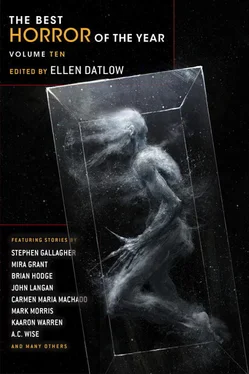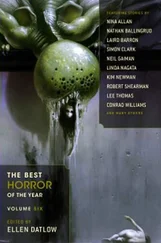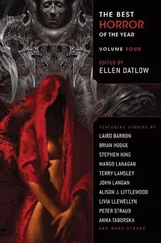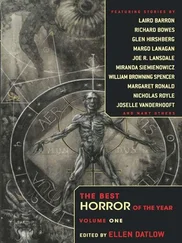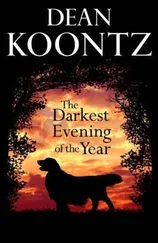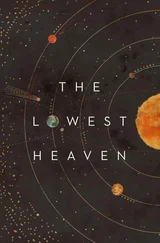Каарон Уоррен - The Best Horror of the Year Volume Ten
Здесь есть возможность читать онлайн «Каарон Уоррен - The Best Horror of the Year Volume Ten» весь текст электронной книги совершенно бесплатно (целиком полную версию без сокращений). В некоторых случаях можно слушать аудио, скачать через торрент в формате fb2 и присутствует краткое содержание. Город: New York, Год выпуска: 2018, ISBN: 2018, Издательство: Night Shade Books, Жанр: Ужасы и Мистика, на английском языке. Описание произведения, (предисловие) а так же отзывы посетителей доступны на портале библиотеки ЛибКат.
- Название:The Best Horror of the Year Volume Ten
- Автор:
- Издательство:Night Shade Books
- Жанр:
- Год:2018
- Город:New York
- ISBN:978-1-5107-1667-4
- Рейтинг книги:4 / 5. Голосов: 1
-
Избранное:Добавить в избранное
- Отзывы:
-
Ваша оценка:
- 80
- 1
- 2
- 3
- 4
- 5
The Best Horror of the Year Volume Ten: краткое содержание, описание и аннотация
Предлагаем к чтению аннотацию, описание, краткое содержание или предисловие (зависит от того, что написал сам автор книги «The Best Horror of the Year Volume Ten»). Если вы не нашли необходимую информацию о книге — напишите в комментариях, мы постараемся отыскать её.
The Best Horror of the Year Volume Ten — читать онлайн бесплатно полную книгу (весь текст) целиком
Ниже представлен текст книги, разбитый по страницам. Система сохранения места последней прочитанной страницы, позволяет с удобством читать онлайн бесплатно книгу «The Best Horror of the Year Volume Ten», без необходимости каждый раз заново искать на чём Вы остановились. Поставьте закладку, и сможете в любой момент перейти на страницу, на которой закончили чтение.
Интервал:
Закладка:
George says, We have to get out of here. He runs from the chamber. Agatha jumps off Megan onto the wall. She hangs on it like a spider. Professor Price shouts, Agatha! Please! Agatha! Agatha scrambles up the wall and out of the light. Carmen sweeps her flashlight around the ceiling. Kristi shouts, Where did she go? Where is she? The professor shouts, Agatha! Please!
Agatha drops onto Carmen. Her flashlight spins away. She screams. Agatha growls. Kristi and Professor Price scramble out of the way. There is the sound of Carmen struggling. Kristi shouts, Come on! Let’s go! Now! Carmen shouts, wait! Help me! Kristi says, I’m sorry, and runs through the passageway Ben discovered. Carmen shouts, Kristi! Agatha snarls. The professor says, Agatha, please, then follows Kristi. Carmen screams.
The screen goes black.
After five seconds, there is a clatter and the screen fills with Kristi’s face, illuminated by the camera light. She says, I don’t know why I’m doing this. There’s no way either of us is getting out of here. I can hear her—Agatha. She’s coming closer. Kristi begins to cry. She says, I just wanted to say, I’m sorry about Carmen. I couldn’t do anything about Ben and Megan. Maybe I couldn’t have helped Carmen, either, but I’m sorry. She wipes her eyes with the back of her hand. She says, And George, if you make it out of this place, and somehow see this, fuck you, you chickenshit piece of shit.
The camera turns to show Isabelle Price’s face. Kristi says, You never told us everything, did you? Professor Price shakes her head. Kristi asks, Anything you want to say now? Isabelle shakes her head. Kristi says, You know this is all your fault. The professor nods. Kristi says, We’re going to leave this camera here, in hopes that someone will find it. Which is about as stupid as all the rest of this, but hey, why stop now? She sets the camera down, turned to light the tunnel she and Professor Price are headed down. She says, We still have a flashlight. We’ll hold off using it as long as we can, to save the batteries. Professor Price starts along the tunnel. Kristi follows. When she is almost out of view Kristi stops and turns. She says, I can hear her. Hurry.
The women disappear into the darkness. For the next three minutes, the credits roll over the scene. Once the credits are finished, the camera light dims. There is the sound of bare feet slapping stone. Agatha’s face fills the screen. Her features are those of a young woman, covered in blood. Her eyes are wide. Blood plasters her hair to her forehead and cheeks. The screen flickers. Agatha’s left eye is an empty socket, her left cheek sunken, her lips on this side drawn back from jagged teeth. The screen flickers again, goes to static, then goes dark.
It’s the teacher in me: I can’t help wanting to discuss all the things Lost in the Dark does right. The opening, for example, which imparts a substantial amount of background information to the viewer without sacrificing interest, as well as the Agatha Merryweather narrative, itself, which taps into the enduring fascination with the Catholic Church and its secrets (which, if I felt like being truly pedantic, I would point out is one of the ribs of the larger umbrella of the Gothic under which the movie shelters). Or the way the film suggests there’s even more to the Agatha narrative than we’ve been told, than anyone’s been told. Only Isabelle Price knows the full story, and to the end, she keeps back some portion of it. By making her the model for the portraits of Agatha the crew encounter, a similarity no one mentions, the movie visually suggests a connection between the women, which contributes to the audience’s growing sense that the characters are in a situation that’s much worse than they understand. (It’s one of the enduring conceits of the film that the identity of the actress who portrays Bad Agatha has never been revealed. The credits assign the part to Agatha Merryweather. I’m of the camp that would wager money Isabelle Router played the monster; it fits too well with the portrait ploy not to be the case.)
Were it not for Sarah Fiore’s interview in the Blu-ray extras, this article might address itself to exactly such a critical analysis. That interview, though, changed everything. According to Sarah, the trip into the mine to shoot footage for Isabelle Router’s documentary lasted much longer than they had planned, almost twenty hours. During that time, the crew became lost, wandering out of the mine into a series of natural tunnels and caves. While underground, they had a number of strange experiences, about half of which at least one member of the crew caught on film. They returned to the surface with a couple of hours of decent footage that was not what they had been planning on. After a rough edit, Sarah sat down with Larry Fessenden to watch the film. He loved it. He also thought she had abandoned her plan for a documentary in favor of an outright horror movie. Thinking quickly, Sarah responded to his enthusiasm by saying that yes, she had decided to go a different route. Fessenden offered to produce a feature-length version of what he’d seen, on the condition that Sarah revise the script to give it a more substantial narrative. Since there was no actual script at that moment, his request was both easier and harder to fulfill; nonetheless, she agreed to it. She also agreed that she should keep as much of what she’d shown him as they could in the longer film. This turned out to be about forty minutes of an hour and forty minute movie. Isabelle Router was willing essentially to play herself, as were Kristi Nightingale and George Maltmore. The interns, Priya and Chad, had no interest in taking part in another expedition to the mine, so they were replaced by a pair of actors, Ben Formosa and Megan Park. Rather than juggle the roles of director, scriptwriter, and actor, Sarah hired Carmen Fuentes to play her. The rest is cinema history.
If we’re to believe Sarah, Lost in the Dark was built from another film, a piece of fiction constructed using a significant portion of non-fiction. I use the “if” because, as soon as word of her interview got out, the question of its authenticity was raised. After all, this was a filmmaker who had started her career with a faux-documentary. What better way to mark the ten-year anniversary of that production than with another instance of the form, one designed to send audiences back to pore over the original movie? By those who took this view of Sarah’s revelations, she was variously praised for her cleverness and decried for her cynicism. I’ve swung back and forth on the matter. I did my due diligence. The narrative Sarah relates, of the mysterious woman who stepped down from the train to Wiltwyck, the murdered men at the entrance to the mine, is true. You can read about it online, in the archives of the Wiltwyck Daily Freeman and the Poughkeepsie Journal . Confirming Isabelle Router’s uncle’s story proved more difficult. Richard Higgins died in Tampa three years ago. I located one of his former colleagues, Henry Ellison, who confirmed that Rich had gone into the mine to retrieve that dumbass high school kid. Of any more than that, Rich never spoke to him.
Still, there’s sufficient evidence that Sarah Fiore was telling at least some of the truth. This doesn’t mean there was a documentary shot between her discovery of this information and Lost in the Dark . Once again, I did some digging and came up with contact information for all but one of the members of the (supposed) original crew. Wherever Chad Singer currently resides, it’s beyond my rudimentary sleuthing abilities to locate. Of the remainder of those involved, Priya Subramani listened to my introduction, then hung up and blocked my number. Kristi Nightingale told me to go fuck myself; I’m not sure if she also blocked me, since there didn’t seem much point in calling back. George Maltmore instantly was angry, demanding to know who the hell I thought I was and what the hell I thought I was playing at. Despite my best efforts to reassure him, he became increasingly incensed, threatening to find out where I lived and show up at my front door with his shotgun. Finally, I hung up on him. Somewhat to my surprise, Larry Fessenden spoke to me for almost half an hour; although he did so without answering my question in a definitive way. Sure, he said, he remembered the film that Sarah had brought to him. It was a terrific piece of work. Was what he saw a documentary? I asked. Ah, he said, yeah, that was the story making the rounds, wasn’t it? He couldn’t remember Sarah saying that to him at the time, but it would be something if it turned out to be true, wouldn’t it?
Читать дальшеИнтервал:
Закладка:
Похожие книги на «The Best Horror of the Year Volume Ten»
Представляем Вашему вниманию похожие книги на «The Best Horror of the Year Volume Ten» списком для выбора. Мы отобрали схожую по названию и смыслу литературу в надежде предоставить читателям больше вариантов отыскать новые, интересные, ещё непрочитанные произведения.
Обсуждение, отзывы о книге «The Best Horror of the Year Volume Ten» и просто собственные мнения читателей. Оставьте ваши комментарии, напишите, что Вы думаете о произведении, его смысле или главных героях. Укажите что конкретно понравилось, а что нет, и почему Вы так считаете.
